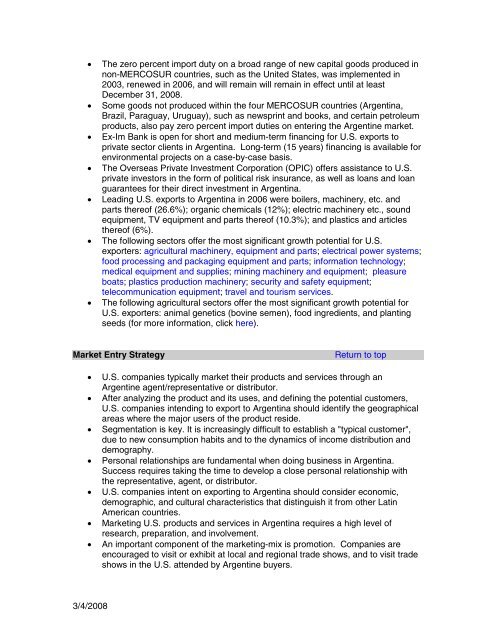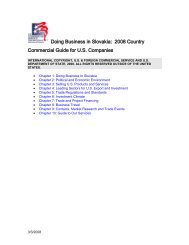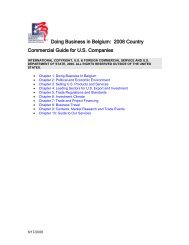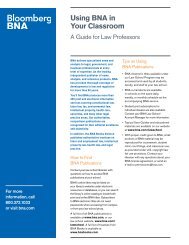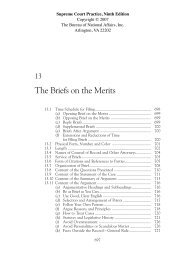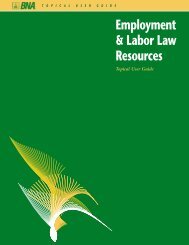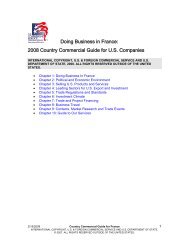Create successful ePaper yourself
Turn your PDF publications into a flip-book with our unique Google optimized e-Paper software.
3/4/2008<br />
The zero percent import duty on a broad range of new capital goods produced in<br />
non-MERCOSUR countries, such as the United States, was implemented in<br />
2003, renewed in 2006, and will remain will remain in effect until at least<br />
December 31, 2008.<br />
Some goods not produced within the four MERCOSUR countries (<strong>Argentina</strong>,<br />
Brazil, Paraguay, Uruguay), such as newsprint and books, and certain petroleum<br />
products, also pay zero percent import duties on entering the Argentine market.<br />
Ex-Im Bank is open for short and medium-term financing for U.S. exports to<br />
private sector clients in <strong>Argentina</strong>. Long-term (15 years) financing is available for<br />
environmental projects on a case-by-case basis.<br />
The Overseas Private <strong>In</strong>vestment Corporation (OPIC) offers assistance to U.S.<br />
private investors in the form of political risk insurance, as well as loans and loan<br />
guarantees for their direct investment in <strong>Argentina</strong>.<br />
Leading U.S. exports to <strong>Argentina</strong> in 2006 were boilers, machinery, etc. and<br />
parts thereof (26.6%); organic chemicals (12%); electric machinery etc., sound<br />
equipment, TV equipment and parts thereof (10.3%); and plastics and articles<br />
thereof (6%).<br />
The following sectors offer the most significant growth potential for U.S.<br />
exporters: agricultural machinery, equipment and parts; electrical power systems;<br />
food processing and packaging equipment and parts; information technology;<br />
medical equipment and supplies; mining machinery and equipment; pleasure<br />
boats; plastics production machinery; security and safety equipment;<br />
telecommunication equipment; travel and tourism services.<br />
The following agricultural sectors offer the most significant growth potential for<br />
U.S. exporters: animal genetics (bovine semen), food ingredients, and planting<br />
seeds (for more information, click here).<br />
Market Entry Strategy Return to top<br />
U.S. companies typically market their products and services through an<br />
Argentine agent/representative or distributor.<br />
After analyzing the product and its uses, and defining the potential customers,<br />
U.S. companies intending to export to <strong>Argentina</strong> should identify the geographical<br />
areas where the major users of the product reside.<br />
Segmentation is key. It is increasingly difficult to establish a "typical customer",<br />
due to new consumption habits and to the dynamics of income distribution and<br />
demography.<br />
Personal relationships are fundamental when doing business in <strong>Argentina</strong>.<br />
Success requires taking the time to develop a close personal relationship with<br />
the representative, agent, or distributor.<br />
U.S. companies intent on exporting to <strong>Argentina</strong> should consider economic,<br />
demographic, and cultural characteristics that distinguish it from other Latin<br />
American countries.<br />
Marketing U.S. products and services in <strong>Argentina</strong> requires a high level of<br />
research, preparation, and involvement.<br />
An important component of the marketing-mix is promotion. Companies are<br />
encouraged to visit or exhibit at local and regional trade shows, and to visit trade<br />
shows in the U.S. attended by Argentine buyers.


